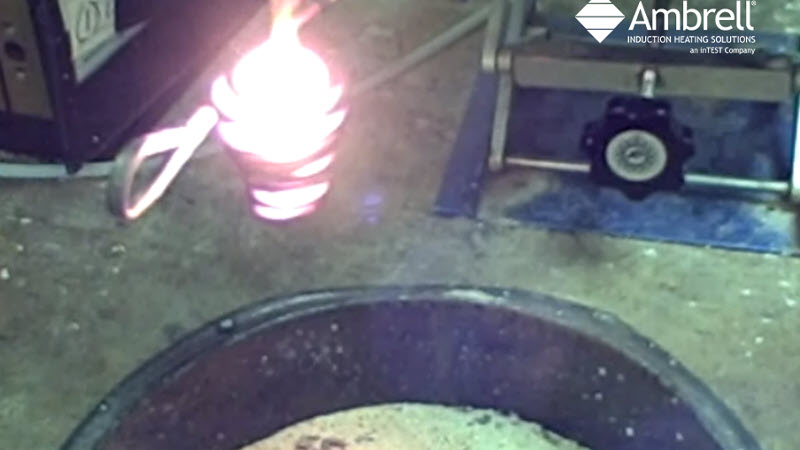Induction Brazing an Aluminum Assembly
Objective A company wanted to assess using induction heating for their aluminum assembly brazing process, and contacted THE LAB at Ambrell to utilize...
Applications
Applications: More
Applications: More

Industries:
Industries: More
Industries: More
Industries: More

Products:
Products: More
Services:
Services: More

Learn:
Learn: More
About:


A client contacted THE LAB at Ambrell needing to repeatably superheat molten metal with induction heating for a different sample mass. THE LAB determined that an Ambrell EASYHEATTM 10 kW, 150-400 kHz induction heating system with single position nine-turn helical coil would be the right solution for the client.
The single-position nine-turn helical coil was used to generate the required heating for the application. The frequency on the EASYHEAT was set to 268 kHz. The 16-gram slug of steel was then placed into the coil and supported with a ceramic rod. When the sample was melted the part changed shape to an inverted tear drop. The testing proved the client's application was viable with induction heating.
Melting with induction heating from Ambrell offers several benefits. Hands free heating is possible that doesn't require operator skill, which leads to repeatability. There is also a fast and controllable temperature ramp. Finally, there's an even distribution of heat that lends itself to consistent and repeatable results.
If you have an application that could benefit from induction heating, you should consider free applications testing, including our convenient Remote Lab Service. With Remote Lab Service, you can view testing in our laboratory from the comfort and convenience of your office. 

Objective A company wanted to assess using induction heating for their aluminum assembly brazing process, and contacted THE LAB at Ambrell to utilize...

Induction heating is a process that uses electromagnetic fields to heat electrically conductive materials. It has been used in numerous industries...

Induction heating, a process that uses electromagnetic induction to heat electrically conductive materials, is often thought of for large industrial...